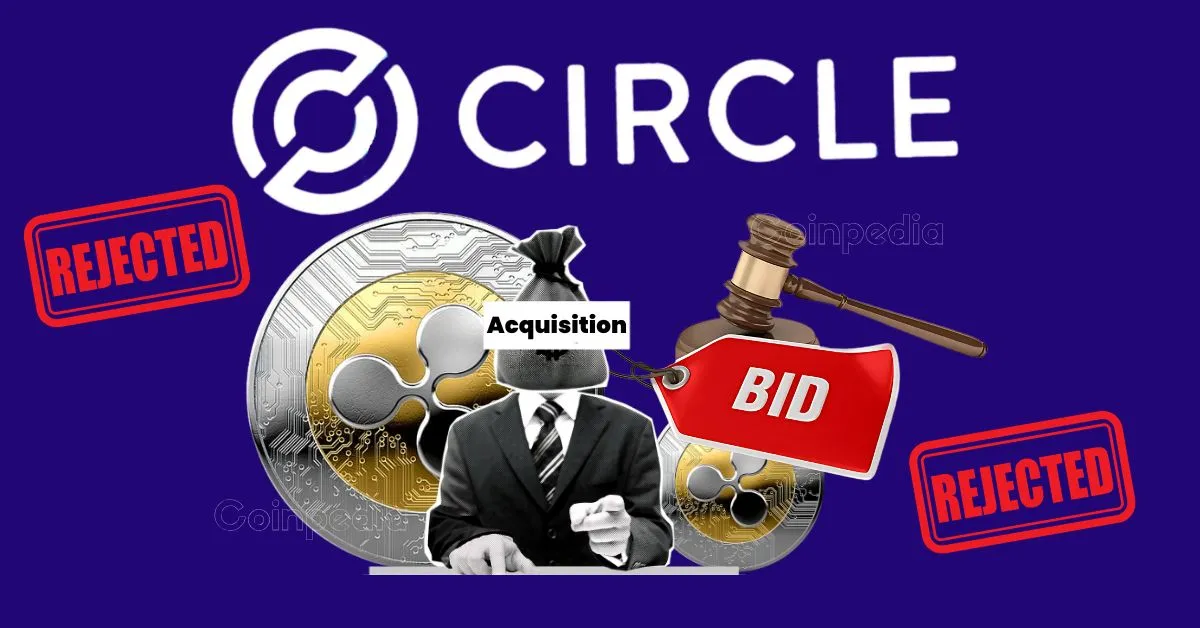
Ripple’s bold $5 billion offer to acquire Circle, the issuer of USDC, has officially fallen through — and now the crypto world is buzzing with speculation. While the deal could have instantly positioned Ripple at the forefront of the stablecoin sector, Circle turned down the offer.
1. Illiquid Ripple Equity Offer
Insiders reveal that Circle wasn’t satisfied with Ripple’s offer and declined it, considering the valuation insufficient. According to Jungle Inc, Ripple likely didn’t offer the full amount in cash. Instead, a significant portion of the $5 billion bid may have come in Ripple equity, shares that are currently private, illiquid, and hard to value. For a company like Circle, already preparing for an IPO, trading its future for equity with uncertain market value wasn’t appealing. Although Ripple hasn’t followed up with a new bid, it’s still eyeing a possible deal.
2. Ripple’s Competing Stablecoin
Ripple has already announced its own stablecoin, RLUSD, which will operate on both the XRP Ledger and Ethereum. As crypto analyst Stellar Rippler noted, acquiring Circle would have meant absorbing a direct competitor, however he also raised questions about overlap. Circle may have seen the move as a play to neutralize USDC and wasn’t ready to give up its lead in regulatory adoption and market trust.
Moreover, Circle’s USDC is seen as a fully-reserved, regulated stablecoin, and acquiring it would mean Ripple could skip the slow adoption phase for RLUSD and instantly dominate liquidity.
3. Circle’s Strong Pre-IPO Position
As shared by John Deaton, Circle is well-funded with strong backers like BlackRock and Fidelity. Its pre-IPO shares are trading around $40, with a target IPO valuation of $5 billion. Circle was previously valued at $9B in a failed 2022 SPAC deal and raised funds at $8B in its 2022 Series F round. Given this position, Circle didn’t feel pressure to sell majorly since its own stock remains in high demand on the secondary market.
4. Regulatory and Market Edge
Circle’s USDC is widely accepted in U.S. regulatory circles, with integrations across Visa, Stripe, and Robinhood. In a series of X post Stellar Rippler pointed out that Ripple could have instantly gained this infrastructure, but Circle wasn’t willing to trade it away, especially not for equity in a company launching a rival product.
5. Strategic Misalignment
Analysts suggest this wasn’t about competition, but consolidation. Ripple wanted to fast-track its position in the stablecoin sector by acquiring USDC’s network and reputation. But as Stellar Rippler concluded, Circle saw more value in maintaining its independence rather than merging with a rival looking to reshape the market on its terms.
In short, Ripple aimed high, but Circle wasn’t ready to be absorbed.
Ripple aimed to fast-track its entry into the stablecoin space by acquiring Circle and gaining control over USDC.
Ripple reportedly offered $4–5 billion, though much of it was likely in illiquid Ripple equity rather than cash.
Circle declined due to strategic misalignment, regulatory edge, and confidence in its own upcoming IPO.
Yes, Ripple recently announced RLUSD, a new stablecoin built on the XRP Ledger and Ethereum.
While no new offers have surfaced, Ripple may still seek strategic acquisitions to boost its stablecoin ambitions.
Galaxy Digital Inc. (NASDAQ: GLXY), a financial investment firm focused on the crypto market, has…
Something big is happening at the crossroads of AI, blockchain, and public markets, and this…
Historical crypto charts indicate that small coins, costing less than a penny, often experience explosive…
The cryptocurrency world is buzzing with excitement as Ruvi AI (RUVI) gains momentum as a…
The cryptocurrency market is experiencing a pivotal moment as institutional money floods into digital assets…
Bitcoin is currently in a quiet phase. The price has been moving sideways without any…